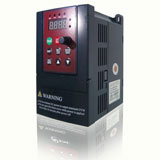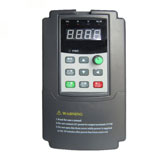String inverters VS central inverters for big power plants
Using string inverters instead of central inverters for big power plants is a totally different concept, that affects to the whole management of the PV plant in some aspects:
1. Designing: with multi-MPPT string concept a better management of the shades is obtained. If lower row of the structure is connected to a different MPPT than upper rows, you can place structures closer, obtaining a best ratio of W/m2. Furthermore, cabins are smaller (and provoke less shadow) and marginal areas of the ground can be used (if the inverter is flexible enough), thus more panels can be installed in the same area, peaking down the costs (€/Wp) of LV cables, MV cables, fencing, security perimetral systems, etc. Moreover, it is not necessary to leave special rows for installation, because machinery used is lighter.
2. Costs of installation: even though string inverters are more expensive than string inverters, they get to save money in some points of the installation. Smart DC boxes can be omitted as long as inverter as inverters have all the protections already included and monitoring is done at string level (this aso means that you don't have to use cables to communicate the values from the boxes to the inverter and that you don't have to feed the boxes with power), cabins are smaller, cables are thinner ( thus no use of special machines to install them) and no big cranes are necessary.
3. Yield of the installation: although EUR effic is normally higher in central inverter, every string is optimized with the string inverters solution, thus miss-match, soiling, shadow, eventual breaks, and any other event affecting to string voltage will have minimum effect in the yield of the plant. Furthermore, MPP tracking is more efficient because the curve is "cleaner". They also start working before in the morning and end later in the evening. Availability is also higher because you can have some inverters broken down in a year, but you can change them really quickly if you have some spare inverters and you don't need an advanced technician of the inverter manufacturer to come to the installation. Imagine if 1MW central inverter that stops working on Friday evening and the technician doesn't come until Monday, you lose such a lot of yield.
4. Maintenance: with string inverters there's no need of maintenance contract with the central inverter manufacturer. You don't pay to ensure an availability because you know that you are going to fulfill it always. Those are big costs within the life of the installation. Furthermore, no preventive maintenance is mandatory, the only operation to be done is cleaning the fans when they are dirty with some compressed air. Furthermore, if you do some maintenance, the time of technical stop is lower with string inverters, because with centrals you have to stop all the installation during some hours while with string you just disconnect it for a short moment whereas you clean the fans.
1. Designing: with multi-MPPT string concept a better management of the shades is obtained. If lower row of the structure is connected to a different MPPT than upper rows, you can place structures closer, obtaining a best ratio of W/m2. Furthermore, cabins are smaller (and provoke less shadow) and marginal areas of the ground can be used (if the inverter is flexible enough), thus more panels can be installed in the same area, peaking down the costs (€/Wp) of LV cables, MV cables, fencing, security perimetral systems, etc. Moreover, it is not necessary to leave special rows for installation, because machinery used is lighter.
2. Costs of installation: even though string inverters are more expensive than string inverters, they get to save money in some points of the installation. Smart DC boxes can be omitted as long as inverter as inverters have all the protections already included and monitoring is done at string level (this aso means that you don't have to use cables to communicate the values from the boxes to the inverter and that you don't have to feed the boxes with power), cabins are smaller, cables are thinner ( thus no use of special machines to install them) and no big cranes are necessary.
3. Yield of the installation: although EUR effic is normally higher in central inverter, every string is optimized with the string inverters solution, thus miss-match, soiling, shadow, eventual breaks, and any other event affecting to string voltage will have minimum effect in the yield of the plant. Furthermore, MPP tracking is more efficient because the curve is "cleaner". They also start working before in the morning and end later in the evening. Availability is also higher because you can have some inverters broken down in a year, but you can change them really quickly if you have some spare inverters and you don't need an advanced technician of the inverter manufacturer to come to the installation. Imagine if 1MW central inverter that stops working on Friday evening and the technician doesn't come until Monday, you lose such a lot of yield.
4. Maintenance: with string inverters there's no need of maintenance contract with the central inverter manufacturer. You don't pay to ensure an availability because you know that you are going to fulfill it always. Those are big costs within the life of the installation. Furthermore, no preventive maintenance is mandatory, the only operation to be done is cleaning the fans when they are dirty with some compressed air. Furthermore, if you do some maintenance, the time of technical stop is lower with string inverters, because with centrals you have to stop all the installation during some hours while with string you just disconnect it for a short moment whereas you clean the fans.

 High quality frequency inverters for electric motor speed controls in energy-saving solutions.
High quality frequency inverters for electric motor speed controls in energy-saving solutions.

